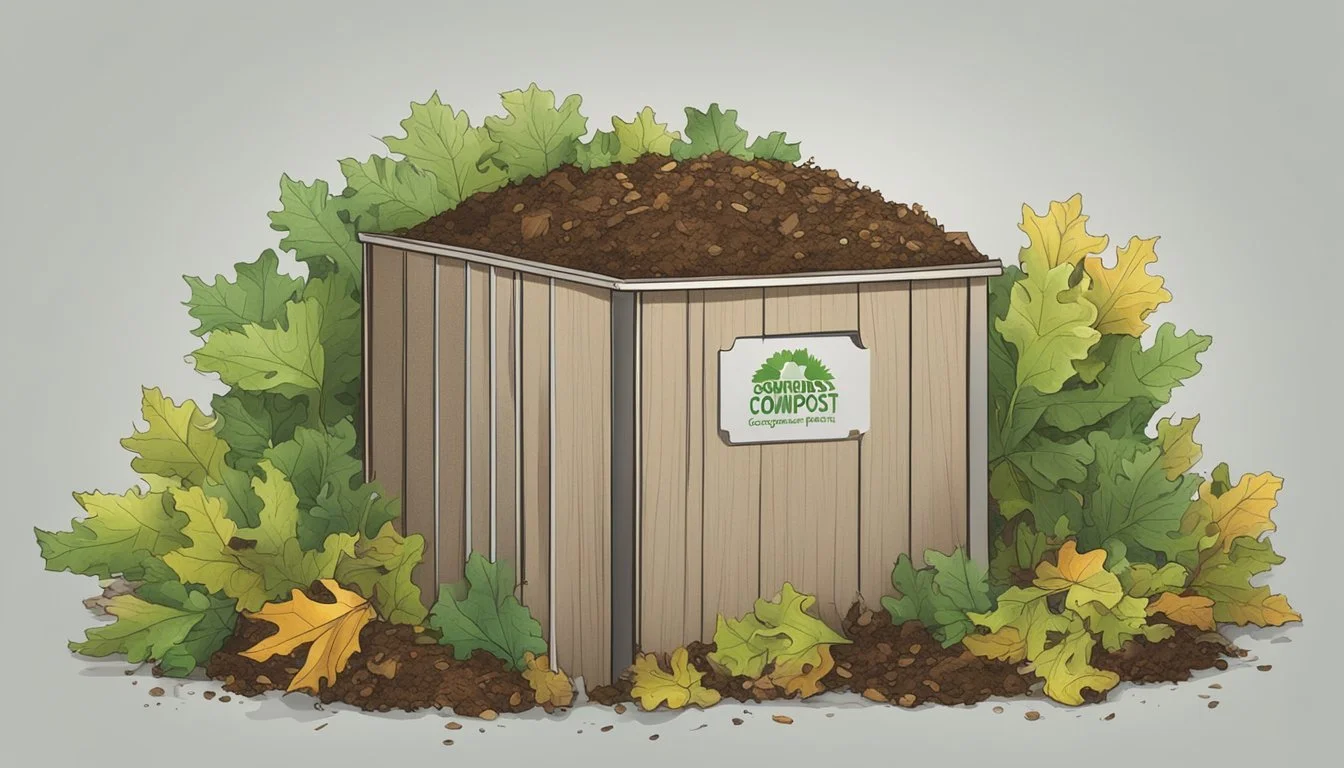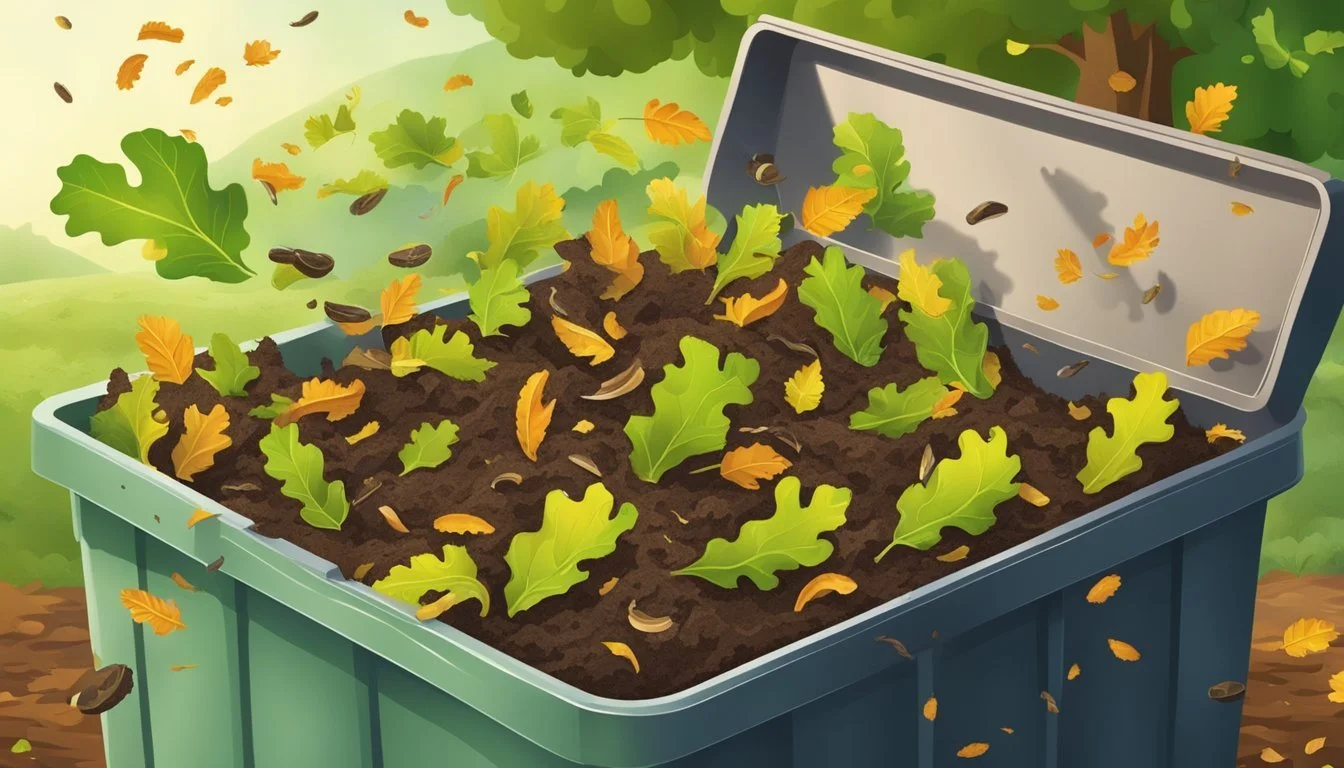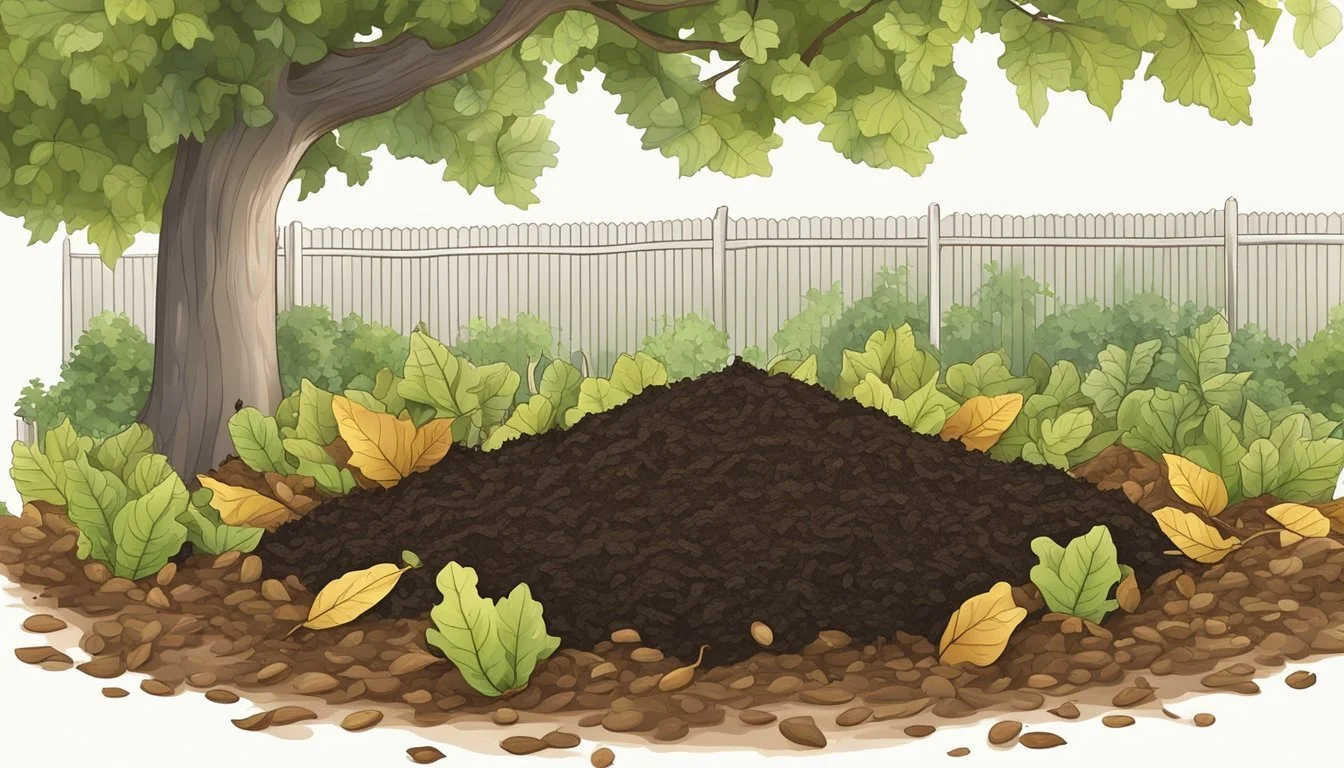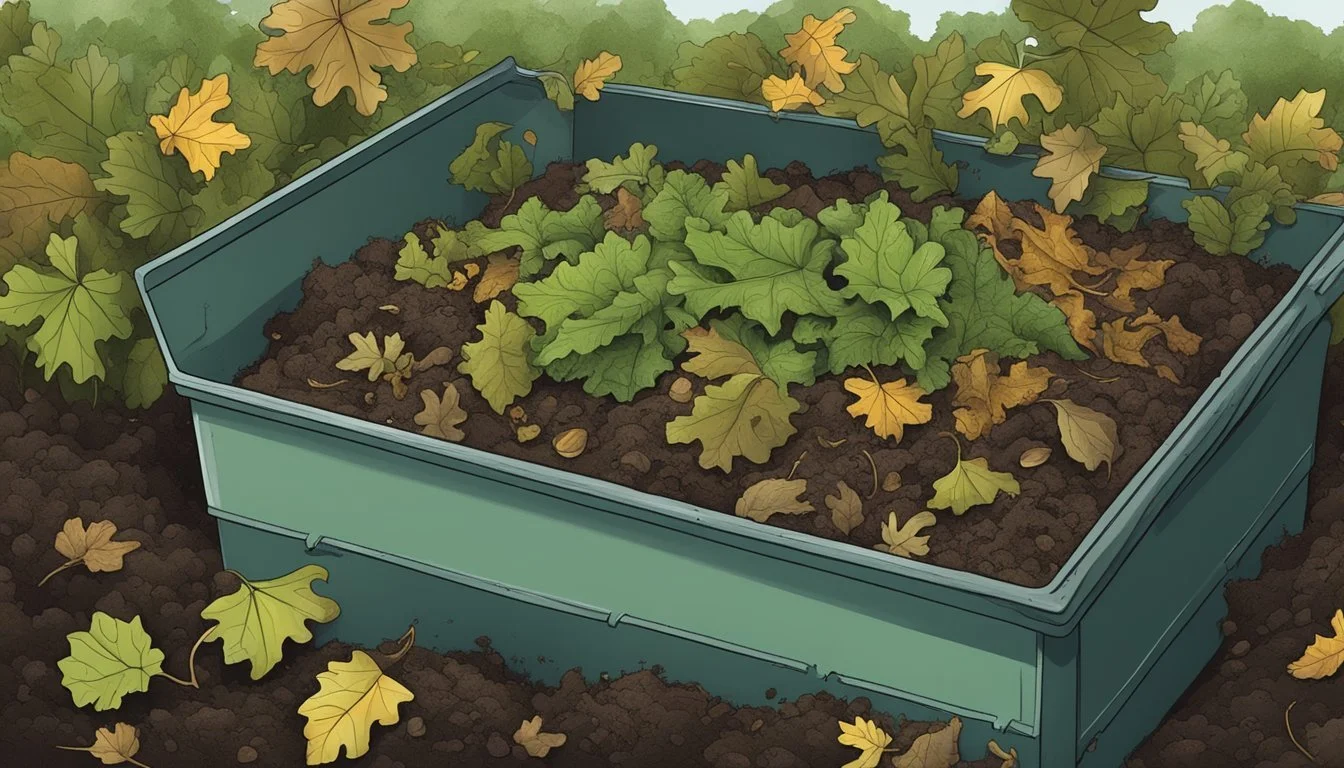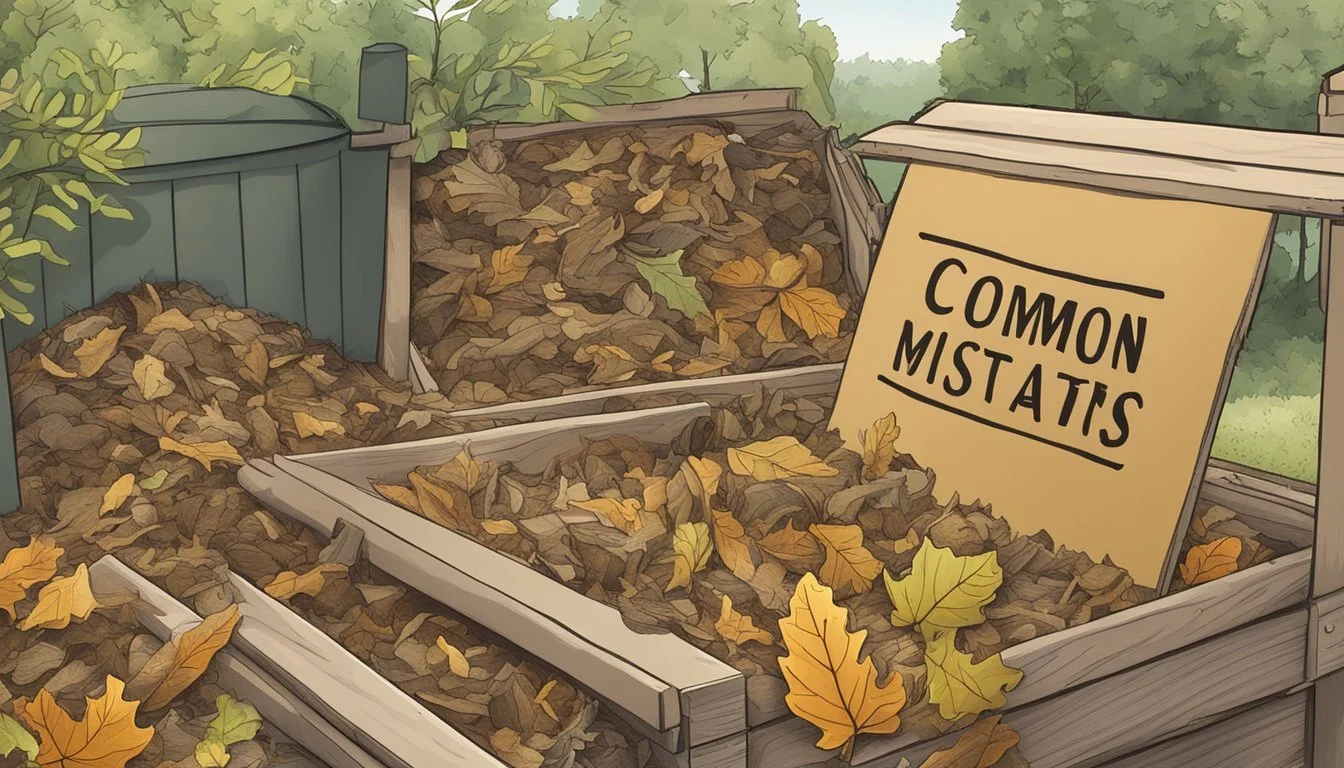Can You Compost Oak Leaves?
Understanding Their Role in Composting
Oak leaves are a common byproduct of yard maintenance, particularly in the fall, and many gardeners and homeowners question whether they can be added to compost piles. The answer is affirmative; oak leaves can indeed be composted. While oak leaves are acidic in their fresh state, with a pH level ranging from 4.5 to 4.7, this acidity diminishes as the leaves decompose, making them suitable for composting.
When incorporating oak leaves into a compost pile, one should consider that these leaves are generally tougher and more acidic than other types of leaves, which could result in a slower decomposition process. To counteract this, it's advisable to shred the oak leaves before adding them to the compost. This increases the surface area, thereby accelerating their breakdown and facilitating the creation of a balanced compost.
Composting oak leaves provides a good source of carbon and nutrients, contributing to a healthy soil amendment once fully decomposed. By integrating this natural resource into the composting process, gardeners can effectively recycle the nutrients locked within the leaves and promote sustainable gardening practices.
Understanding Composting Principles
The process of composting transforms organic matter into a nutrient-rich soil conditioner. This section explores the underlying science and particular benefits of integrating oak leaves into a compost strategy.
The Science of Composting
Composting is an aerobic, biological process where microorganisms break down organic materials into simpler substances. The key factors influencing this process include:
Organic Matter: Materials such as leaves, grass clippings, and kitchen scraps serve as food for microorganisms.
Microorganisms: Bacteria and fungi are the primary agents of decomposition.
Aeration: Oxygen is essential for aerobic microbes; turning the compost pile introduces oxygen.
Moisture: Water is critical for microbial activity but must be balanced to avoid overly wet conditions.
Temperature: Heat generated by microbial activity can accelerate decomposition.
A successful compost pile has a balanced carbon-to-nitrogen (C) ratio, ideally at 30:1. Carbon-rich materials, like oak leaves, provide energy for microorganisms, while nitrogen sources, like green plant matter or manure, supply proteins for microbe growth.
Benefits of Composting Oak Leaves
Composting oak leaves has several advantages:
Nutrient Addition: Oak leaves decompose into compost that enriches soil with nutrients.
Soil Structure Improvement: Adding compost made from oak leaves enhances soil aeration and water retention attributes.
pH Modification: Although oak leaves are slightly acidic, they lose much of their acidity in the composting process, helping to maintain a neutral soil pH.
Consequently, not only does composting oak leaves reduce yard waste, but it also capitalizes on their inherent carbon supply, supporting the composting process and ultimately the health of garden soil.
The Nature of Oak Leaves
When composting, understanding the characteristics of oak leaves is crucial, especially their tannin content and natural acidity, as well as the time they take to decompose.
Tannin and Acidity Concerns
Oak leaves are known for their high tannin levels and natural acidity, which can influence the composting process. The pH of oak leaves generally ranges between 4.5 and 5.5, leaning towards the acidic side. These acidic properties are attributed to tannins, which are organic substances that can slow down the decomposition process and affect the eventual pH of the compost.
Decomposition Time of Oak Leaves
The breakdown of oak leaves can be a slow process due to their lignin content, which makes them more resilient to decay than other types of leaves. The average time for oak leaves to compost fully can vary; it often takes several months to a year to decompose completely. This duration is influenced by several factors such as the presence of nutritional components, the balance of green and brown materials in the compost, and external conditions such as moisture and temperature.
Preparing Oak Leaves for Composting
Proper preparation of oak leaves can significantly enhance their compostability. By shredding the leaves and balancing them with green materials, they decompose more efficiently.
Shredding and Mulching Techniques
Shredding oak leaves is crucial as their tough texture can slow down the composting process. A mulching mower with a mulching blade is highly effective for this purpose, as it cuts the leaves into finer pieces, accelerating decomposition. If a mulching mower is not available, a regular mower can be used as an alternative, although it may not be as efficient. For those who prefer a specialized tool, a leaf shredder can also be employed to achieve similar results. The mulched leaves will then serve as a beneficial brown material or carbon-rich element in the compost blend.
Recommended tools:
Mulching mower
Regular mower
Leaf shredder
Balancing Green and Brown Materials
To ensure a healthy composting process, a mix of green and brown materials is needed. Oak leaves, when mulched, become an excellent source of brown material. Balancing them with green materials, such as grass clippings, is necessary to avoid overly acidic compost. It's essential for one to maintain roughly a 3-to-1 ratio of brown to green to provide adequate carbon and nitrogen content. This balance supports microbial activity and fosters effective composting.
Balancing tips:
Maintain a 3-to-1 ratio of brown (oak leaves) to green materials.
Add grass clippings and other green waste to offset the high carbon levels.
Monitor the compost pile's moisture levels and adjust as necessary.
Building and Managing the Compost Pile
When composting oak leaves, one must pay particular attention to layering for aeration and regulating moisture and temperature for efficient decomposition.
Layering and Aeration
A compost pile should consist of alternating layers of green and brown materials, with oak leaves serving as an excellent source of carbon, the brown layer. One should aim to maintain a balance, following a ratio of 3 parts brown to 1 part green. Green materials include kitchen scraps and grass clippings, while brown materials encompass dried leaves and branches. To ensure proper aeration, which is critical for the composting process, it's beneficial to turn the pile every few weeks with a pitchfork. This introduces oxygen essential for microbial activity.
Brown Layer (Carbon-rich): Oak leaves, twigs, paper
Green Layer (Nitrogen-rich): Vegetable peels, coffee grounds, fresh grass clippings
Maintaining Moisture and Temperature
The compost pile requires consistent moisture, akin to the wetness of a wrung-out sponge, to facilitate the decomposition of oak leaves and other organic matter. One can achieve this by watering the pile during dry spells or covering it to retain moisture. The temperature within the pile should be monitored, aiming for it to be warm to the touch, which indicates active microbial decomposition. Maintaining temperature and moisture levels will result in a rich, earthy compost beneficial for enhancing soil structure and fertility.
Ideal Moisture: 40-60% water content
Temperature: Warm to the touch (between 130°F to 160°F is optimal)
Accelerating Composting with Worms
When composting oak leaves, introducing worms, particularly red wigglers, can expedite the process by promoting more efficient organic matter breakdown.
Vermicomposting Basics
Vermicomposting is the practice of using worms to convert organic waste into nutrient-rich compost. Red wigglers (Eisenia fetida) are the preferred species for this task due to their adaptability and voracious appetite. These worms consume and fragment the waste matter, producing castings—a soil-like material rich in nutrients.
Feed Ratio: Red wigglers typically consume waste equivalent to their body weight each day.
Habitat: They thrive in moist, dark, and non-acidic environments.
Temperature Range: Optimal conditions range between 55°F and 77°F (13°C to 25°C).
Best Practices for Worms and Oak Leaves
When including oak leaves in a worm composting setup, one should consider that these leaves are more acidic and tougher than other types. Here are steps to ensure a favorable environment for red wigglers to process oak leaves more effectively:
Shred the Leaves: Chopping or shredding oak leaves can prevent matting and hasten the composting process.
Balance the pH: Because the leaves are acidic, it's essential to balance the bin's pH, either by adding a buffer such as crushed eggshells or by blending in other less acidic organic matter.
Maintain Adequate Moisture: The bin should be kept moist, but not wet, to provide a conducive environment for the worms to ingest and breakdown the organic material.
Using Finished Compost in the Garden
Once your oak leaves have fully decomposed in the compost, the resulting finished compost can be a valuable resource for your garden. This nutrient-rich amendment can enhance soil structure and fertility, promoting a more vigorous garden.
From Compost to Fertilizer
When compost transitions from a pile of decomposing organic matter to a stabilized, nutrient-rich mixture, it is ready to serve as a natural fertilizer. Finished compost contains a balance of essential nutrients that plants require for growth. By integrating compost into the garden soil, one can improve its structure, aeration, and water retention capabilities. Additionally, compost introduces beneficial microorganisms that contribute to a healthy soil ecosystem.
To use compost as fertilizer effectively:
Screen the compost: Ensure that it is free of large particles and residual uncomposted materials.
Top-dress garden beds: Apply a 1-2 inch layer of compost around the base of plants to gradually enrich the soil.
Mix with garden soil: Incorporate 2-4 inches of compost into the top 6 inches of the garden bed to enhance its overall structure.
Test Before Using on Sensitive Plants
While compost is generally beneficial for garden plants, it is prudent to test it before applying to more sensitive plants that might react to the nutrient levels or pH. Particularly in the case of oak leaf compost, with its potential acidic nature, one should be cautious.
A simple testing strategy includes:
pH testing: Check the pH of the compost to ensure compatibility with your garden plants' requirements.
Pathogen check: Look for any signs of disease in the compost that might transfer to the garden. This includes unusual odors or the presence of plant materials that failed to decompose.
Nutrient profile assessment: While not always necessary, understanding the nutrient composition can help tailor the compost application to your plants' needs.
Employing compost as the cornerstone for fertilization strategies ensures a sustainable pathway to maintaining vigorous, resilient garden plants.
Common Questions About Composting Oak Leaves
Composting oak leaves can be beneficial for soil enrichment, yet it is often surrounded by concerns regarding their acidity and the presence of pests or disease. Addressing these queries can ensure the effective use of oak leaves in composting efforts.
Are Oak Leaves Too Acidic for Compost?
Oak leaves are known to be more acidic with a pH between 4.5 and 5.5, yet they can still be a suitable addition to a compost pile. As the leaves decompose, they tend to neutralize and contribute to a balanced pH level in the finished compost. Their initial acidity can actually be advantageous, especially for gardens in need of lower soil pH levels. To counteract any potential issues, it's commonly recommended to mix oak leaves with other compost materials to balance overall acidity.
Shredding oak leaves can speed up the composting process and mitigate acidity concerns.
Layering oak leaves with other compostable materials, such as green waste or manure, enhances decomposition and balances pH.
Can You Compost Leaves with Pests or Disease?
Composting leaves that are infested with pests or disease can introduce these problems to the compost pile. However, a hot composting method, reaching temperatures between 130°F and 150°F, is effective at killing most pests, larvae, and pathogens, turning the material safe to use.
Regular monitoring and turning of the compost pile can ensure it reaches the necessary temperatures to eliminate pests and bacteria.
Avoid composting leaves known to be heavily diseased, as this could potentially spread pathogens that aren't eradicated during the composting process.
Environmental Impact of Oak Leaf Composting
Composting oak leaves can significantly reduce yard waste and enhance soil health, contributing positively to local ecosystems. The process involves converting the abundant foliage into a nutrient-rich amendment for gardens and landscapes.
Reducing Waste Through Leaf Composting
Each year, countless tons of leaves are collected and often disposed of in landfills, contributing to methane emissions — a potent greenhouse gas. Oak leaf composting presents a sustainable alternative to this trend.
Key Points:
Leaves for composting: Oak leaves are a renewable resource that can be repurposed into compost rather than occupying landfill space.
Landfill reduction: Diverting oak leaves from landfills decreases methane production.
Composting these leaves on-site means less reliance on waste management systems and reduces the environmental stress associated with transporting organic matter to disposal facilities. Oak leaves, specifically, are substantial due to their size and quantity, making their composting both a challenge and an opportunity for environmental waste reduction.
The Role of Compost in Soil Health and Ecosystems
Oak leaf compost, once decomposed, becomes a soil amendment known as leaf mold. This transformation results from the leaves' breakdown, which involves both macroorganisms and microorganisms in decomposition.
Benefits of Leaf Mold:
Soil health: It improves soil structure and water retention capabilities.
Nutrient-dense: As a source of nutrients, leaf compost slowly releases minerals necessary for plant growth.
By adding this compost to the soil, gardeners and landscapers can indirectly support larger ecosystems. A healthier soil fosters a more robust plant community, which can improve the resilience of local wildlife habitats. Additionally, oak leaf compost contributes to soil aeration, promoting root growth and enhancing the soil's microbial diversity.
Avoiding Common Mistakes in Composting
Successful composting of oak leaves requires managing the acidity levels and ensuring that the leaves decompose properly.
Balancing pH and Avoiding Toxicity
Oak leaves tend to have a lower pH, meaning they are more acidic, typically between 4.5 and 5.5. To balance the acidity levels in the compost:
Mix oak leaves with alkaline materials, such as crushed eggshells or wood ash.
Consider adding leaves from trees like maple, poplar, willow, and elm, which are less acidic and can help neutralize the overall pH.
Avoid leaves from certain trees like the black walnut, as they contain a toxin called juglone, which can inhibit the growth of plants.
Ensuring Proper Decomposition
Oak leaves are thicker and tougher, leading to a slower decomposition process. To ensure that oak leaves decompose effectively:
Shred the leaves to increase the surface area, thus speeding up decomposition.
Maintain a balance between green (nitrogen-rich) materials and brown (carbon-rich) materials; oak leaves are a brown material.
Rotate or turn the compost pile regularly to aerate it, which is essential for decomposition and to avoid odor or pest issues.
Maintaining a balance of materials and providing proper aeration will facilitate the breakdown of oak leaves into nutrient-rich compost for use in gardening.


